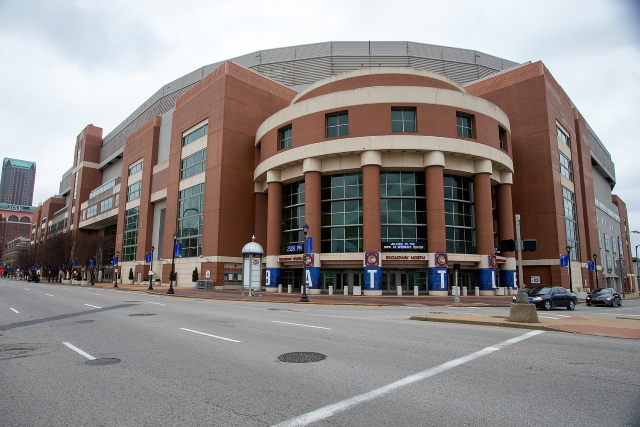There was no hockey today. The NHL was closed yesterday, as well. And don’t bother looking for a game tomorrow.
These are indeed strange times. We’re typically gearing up for the playoffs right now. Instead, we have no idea when or if the NHL will return in 2020. While the lack of games is frustrating in the short-term, the NHL is a durable brand. This is far from the first stoppage in the league’s 103-year history.
Some fans may feel robbed in a season that doesn’t go the distance. But the glass is always half full. Plenty of compelling storylines have emerged so far in 2019-20. We’ve seen the St. Louis Blues on course to defend their Stanley Cup title, the rare use of an emergency backup goaltender by the Carolina Hurricanes, and the turnover of several head coaches, to name just a few highlights.
To prove hockey’s resiliency, here’s a look back at the four most recent times the NHL season was interrupted or canceled.
1991-92: A Players’ Strike Threatens the Postseason
Player grievances over arbitration, free agency, bonus pay, merchandise revenue brought the NHL to a screeching halt on April 1, 1992.
The timing of the players’ strike was deliberate. The NHLPA reasoned that staging a walkout before the playoffs would give the organization an upper hand in negotiations with the league.
A federal mediator was called in to oversee the dealings. The strike was settled after 10 days as the NHL and players agreed to a regular-season expansion to 84 games, the potential for new franchises, larger playoff bonuses, and changes to the free agency and arbitration process.
The season concluded with the Pittsburgh Penguins claiming their second consecutive Stanley Cup on June 1.
The 1994-95 Lockout: The NHL Shuts the Door on Players
Any harmony between NHL players and the league didn’t last long following the 1992 strike. The NHL locked out players at the end of training camps ahead of the 1994-95 season.
The reason for the work stoppage this time included fights over how a salary cap would affect the season. The league eventually capitulated to NHLPA demands and replaced a proposed hard salary cap with a softened luxury cap system.
The lockout lasted over three months, resulting in the loss of 468 regular-season games and the NHL All-Star contest.
The regular season finally kicked off on January 20, 1995, with a reduced 48-game schedule limited to intra-conference play–no games occurred between Western and Eastern Conference teams.
The New Jersey Devils walked away from the mired campaign as Stanley Cup champions on June 24.
The lockout didn’t stop many players from lacing up the skates. Some NHL players spent the time competing in European leagues. Others participated in a 4-on-4 Challenge tournament featuring four skaters and a goalie on each side. Wayne Gretzky convinced players to join him in the Ninety Nine All-Stars Tour for international exhibition games.
The 2004-05 Lockout: North America’s Only Cancelled Major Sports Season
Pro hockey enjoyed nearly a decade of relative peace between the league and players’ association after the 1994-95 lockout.
But as we know, nothing lasts forever in the NHL, not even Jaromir Jagr.
Tensions swirled once again ahead of the 2004-05 season over the introduction of a salary cap. With both sides at loggerheads, the NHL officially scrapped the season in February 2005. The move marked the first, and to date, only, time a North American sports season was entirely canceled. It was also the first season since 1919 that the Stanley Cup was not awarded.
The league and NHLPA finally inked a new collective bargaining agreement on July 13, 2005, and the lockout officially ended on July 22–10 months and six days after the dispute began.
The NHL got its way with a salary cap. Other changes resulting from the agreement included a new revenue-sharing model, the elimination of the two-line pass, and the introduction of the shootout.
Since there were no final standings for the season to determine the 2005 draft order, a lottery system was implemented. The Penguins won top selection and picked future superstar Sidney Crosby.
The 2012-13 Lockout: This Sure Feels Like 1994 Again
Do you see a pattern here?
Sometimes the NHL and NHLPA have a hard time getting along. So went the story during a nearly four-month lockout that postponed the 2012-13 season.
The beef this time around involved the league’s attempt to cut revenue sharing from 57 percent to 46 percent, impose contract term limits, and reshape free agency rights.
Fortunately, the sides hashed out an agreement in time to save the season on January 6, 2013. The new stipulations provided a limit of seven years on free agency contracts (or eight years for players re-signing with the same team), set up mandatory arbitration awards, and created a system for teams to buyout contracts that didn’t fit under the salary cap.
A 48-game schedule kicked off on January 19. Like the abbreviated 1994-95 campaign, teams played only opponents from their conference. In another twist of deja vu, a number of players stayed fresh during the stoppage by playing in European leagues.
The post-season concluded with the Chicago Blackhawks hoisting Lord Stanley’s trophy for the second time in three years.



